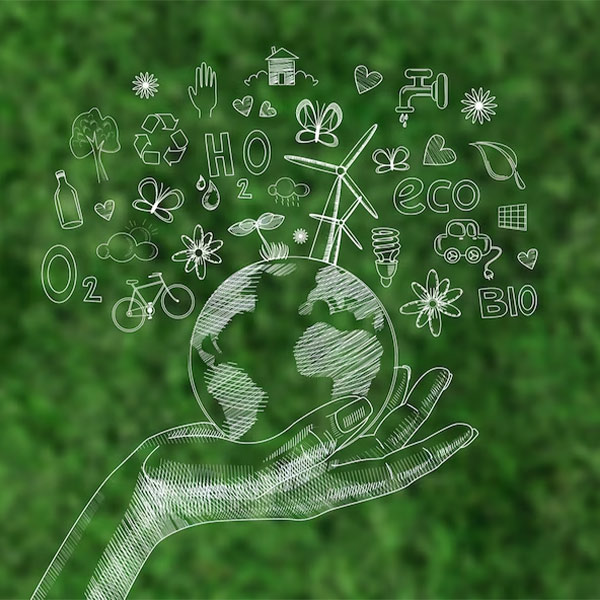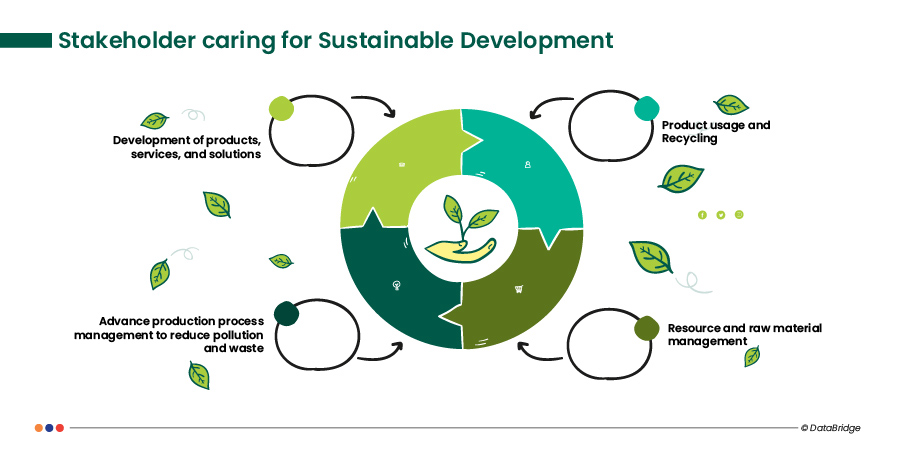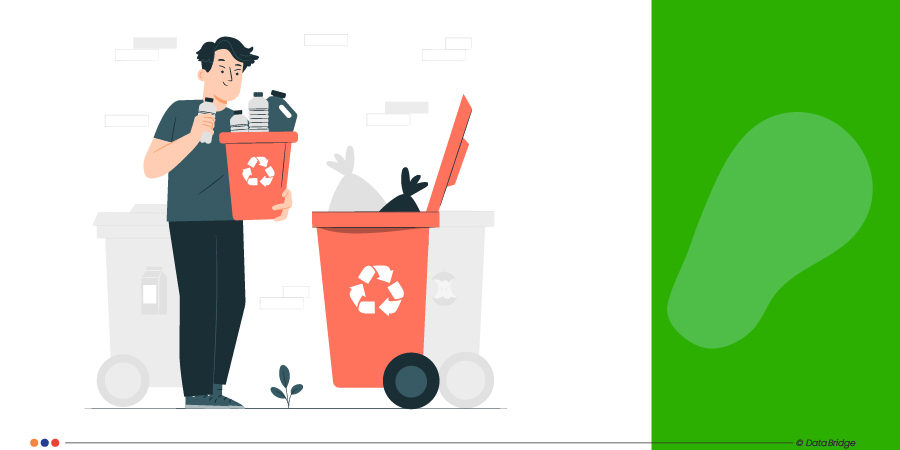The plastics industry has a key role to play on a game-changing path towards a low-carbon future. Reducing the industry’s greenhouse gas emissions during the manufacturing phase of chemical products is one important part of this contribution. Therefore, the plastic sector will contribute to a sustainable future through supporting high efficiency processes and products throughout the value chain.
However, accounting these efficient processes and products which reduce greenhouse emissions and wastes can be complex task and not always easy and straightforward. The majority of plastic products are part of an assembly or more complex end products. This leads to challenges when quantifying the emission reductions enabled by chemical components.
Introduction and Background
The plastic industry is committed to support a circular economy. Companies today are actively pursuing sustainable material solutions to help them meet their sustainability goals and lower their environmental footprint. As investors and manufacturers seek new market opportunities for growth in the plastic sector, one of the portfolios attracting attention is the expanding portfolio of green plastics.
Across the plastic industry, efforts are being made to expand the use of recycled and bio-attributed materials, and there is a growing base of customers using these innovative, and sustainable raw materials today. These materials are created to be a drop-in solution and offer the same versatility as conventional chemicals.

Data Bridge Market Research analyses that the global post-consumer recycled plastics market which was USD 15.05 billion in 2022, is expected to reach USD 15.96 billion by 2030, and is expected to undergo a CAGR of 6.03% during the forecast period of 2023 to 2030.
To know more about the study, visit: https://www.databridgemarketresearch.com/reports/global-post-consumer-recycled-plastics-market
Understanding Post-Consumer Recycled (PCR) Content
PCR stands for post-consumer recycled. PCR resins are made from materials that have been used by the consumer and then discarded. Post-consumer recycled content, commonly referred to as PCR, and is produced from materials recycled by consumers, such as water bottles or other plastic materials collected by local recycling programs or through store drop-off locations. These materials are converted into resin pellets and used to manufacture other plastic products or chemicals. PCR is a great way to support a circular economy and reduce the use of virgin resin.
Increased sustainability is one of the primary benefits. Many companies have committed to sustainability targets which include decreasing the use of virgin plastic, increasing the use of recycled content, and aiming to make all plastic packaging 100% reusable, recyclable, or compostable.

For instance,
- The Ellen MacArthur Foundation is working with over 500 companies globally to pursue sustainability goals till 2025. Using PCR content is a key factor in helping these companies achieve those targets. By using PCR content in the manufacturing, the companies aims to educe the overall carbon footprint of the packaging. As the recycling infrastructure continues to grow, the companies can reduce the amount of plastic that winds up in landfills and minimize the future use of virgin resin in our manufacturing process
Innovations in Chemical Processes for PCR Content
Chemists and researchers around the globe have suggested remarkable technologies and innovations in their respective fields.
Below are the few technologies and innovations:
- Altium Packaging’s Envision Plastics division has a proven track record in providing a variety of post-consumer resins (PCR) solutions in plastic packaging and other molded products
- In July 2023, SABIC and NOVA Chemicals both released new resins made with recycled content, and INEOS Styrolution and TOMRA announced plans for commercial-scale PS recycling for food-contact packaging. INEOS Styrolution, TOMRA and recycling company EGN Entsorgungsgesellschaft Niederrhein partnered on a commercial-scale project to recycle post-consumer PS for food packaging applications
- Pregis and NOVA Chemicals also worked together to create a film from NOVA’s SYNDIGO recycled PE resin that “delivers on the market need for high-quality, food-safe recycled content solutions without compromising on performance”
- SABIC launched a post-consumer polyphenylene ether (PPE) NORYL resin technology that can be used in more than 200 existing NORYL resin grades and new custom grades. It can handle 25% or more PCR
- Dow has incorporated post-consumer recycled (PCR) plastics. The Comapny’s REVOLOOP recycled plastics resins are creating a platform for change. REVOLOOP Recycled Plastics Resins offer many PCR-rich grades as a single-pellet solution, which are fully formulated and ready to use in different applications
Partnerships around the world are increasing the quality of the waste value chain and providing a dependable, consistent flow of desirable post-consumer recycled (PCR) content.
Sustainable Value Chain
Various chemicals manufacturing companies are integrating circular economy principles with innovation and advance technology across the value chain. These technologies help the product life cycle to maximize resource use, boost recycling, minimize greenhouse gas emissions, and meet the needs of customers and environmentally conscious consumers.

Resources and Raw Material Management
- Energy: Reduce the usage of fossil fuels and raise the proportion of renewable energy usage, such as solar energy, through research and development
- Raw Materials: Reduce the usage of raw materials, raise the proportion of recycled raw material use, and maximize waste reintroduction approach for processing through research and development
- Water: Reduce water usage, efficiently utilize water, and increase the proportion of recycle wastewater usage
Development of Products, Services, and Solutions
- Technology-driven Innovation: Research and development efforts are made to create innovations and incorporate technology into the development of products, services, and solutions, encompassing end-to-end eco-friendly processes from design to sourcing, manufacturing, sales, transportation, usage, and recycling. Efficiently use energy and resources as well as minimizing residues or waste to be disposed
- Collaboration with Customers: Identify real customer needs and develop products that meet the required and desired standards. This collaborations help adding value to customers with environmentally friendly solutions, reducing energy and resource consumption, lowering greenhouse gas emissions, reducing waste to be disposed of, and extending the product's lifespan
Advance Production Processes Management to Reduce Pollution and Waste
- Production Efficiency Enhancement: Optimize equipment and processes to minimize pollution and waste from the manufacturing process, including greenhouse gas emissions, air pollution, and waste
- Waste Recycling from the Production Process: Study properties of wastes and develop technology for waste recycling, reprocess into raw materials for use in plants, or transfer to other plants as raw materials
- Quality Control Before Released into the Environment: Use technology to continuously control, monitor, and inspect the waste quality to meet or exceed legal standards
Product Usage and Recycling
- Product Performance Enhancement: Develop products that are more durable and consume fewer resources while retaining the properties that enable lower energy consumption and recycling
- Waste Collection for Recycling in Manufacturing Processes: Develop technology to manage waste collection from expired products for efficient reintroduction into manufacturing processes
- Collaboration with All Sectors to Drive the Circular Economy: Coordinate with the government, private sector, academic institutions, and civil society to form a comprehensive waste management collaboration network. This in turn, create economic value through waste recycling by generating income for the community, or provide public benefits including decrease the amount of waste to be disposed of and reduce greenhouse gas emissions
Innovations for Circular Economy
Circular economy is a crucial concept in addressing waste management, ocean waste, global resource scarcity, and climate change. One of the key principles of the circular economy is to minimize waste, maximize resource utilization, and use renewable raw materials for the production of products and services. Various strategies are needed to reinforce to achieve circular economy across the entire supply chain. These strategies include:
- Awareness: Create awareness of the value of resources among stakeholders to promote recycling waste materials for beneficial purposes
- Business: Innovate and develop solutions to promote the circular economy
- Collaboration: Establish collaboration and networks within the circular economy
For instance,
- SCGC has conducted business in the chemicals industry for a long time, with continuous awareness of environmental issues. SCGC is committed to developing innovative plastics under the ‘SCGC GREEN POLYMER’ brand based on circular economy principles. These solutions provide innovative plastics that meet functional requirements while promoting environmental care, replacing conventional plastics to produce high quality, environmentally friendly plastic products
The companies also strives to create an end-to-end circular system for plastic products through various awareness-building activities, both internally and externally.

Data Bridge Market Research analyses that the global recycled plastic market is growing with a CAGR of 4.6% in the forecast period of 2023 to 2030 and is expected to reach USD 39,458,951.91 thousand by 2030. The growing use of recycled plastic in various industries has been the major driver for the global recycled plastic market.
To know more about the study, visit: https://www.databridgemarketresearch.com/reports/global-recycled-plastic-market
Market Trends and Consumer Demand
One of the key trends in the PCR plastics market is the increasing adoption of recycled plastics in packaging applications. Many companies are now incorporating PCR plastics into their product packaging to achieve sustainability goals and appeal to eco-conscious consumers. The demand for PCR plastics in industries such as food and beverage, personal care, and household products is on the rise.
Plastic is used for packaging of almost every type of product from food and drinks to cleaning supplies and durable goods. In order to ensure that recycled plastic used in food contact applications is safe for consumers, the U.S. Food and Drug Administration (FDA) has a means for reviewing recycling processes used by recycled resin producers. The FDA evaluates the processes, test results and the proposed conditions for the use of the plastic to ensure that any contaminant concentrations do not migrate from plastic into food and result in dietary concentrations that exceed a negligible threshold (less than 0.5 parts per billion).
Data Bridge Market Research analyses that the global plastic packaging market which was USD 374.61 billion in 2022, is expected to reach USD 502.51 billion by 2030, and is expected to undergo a CAGR of 3.74% during the forecast period of 2023 to 2030. The packaging industry has experienced notable expansion, driven by increasing demand in key sectors such as food, beverage, cosmetics, personal care, and pharmaceuticals.
To know more about the study, visit: https://www.databridgemarketresearch.com/reports/global-plastic-packaging-market

Suppliers are also developing solutions that use various manufacturing techniques to embed recycled materials between layers of virgin materials. These layering techniques can be implemented for both rigid and flexible packaging solutions.
For instance,
- Beverage companies, including Keurig Dr Pepper and PepsiCo, have increased the amount of recycled materials in their bottles over the past few years. Fast food restaurant chain Wendy’s has added recycled plastics to their drinking cups
Another trend is the integration of advanced technologies in the recycling process to improve the quality and consistency of PCR plastics. Innovations such as state-of-the-art sorting and cleaning equipment are helping to reduce contamination and enhance the performance of recycled plastics. These advancements are expected to further drive market growth.
The Post Consumer Recycled (PCR) content market encounters specific restraints that shape its dynamics. One significant challenge is the inconsistency in the quality and availability of post-consumer recycled materials. The variability in feedstock composition, contamination levels, and processing methods can result in PCR resins with different properties, affecting their suitability for certain applications. In addition, market players face challenges related to the collection and sorting of post-consumer recyclables, which can impact the overall supply chain for PCR resins. Adapting to quality variations, investing in advanced sorting and recycling technologies, and promoting standardization become crucial for overcoming these challenges and ensuring the market's sustainable growth.
The post-consumer recycled plastic packaging (PCR) market will grow at a rate of 6.4% in the forecast period of 2021 to 2028. Rising government initiatives toward PCR plastic packaging is an essential factor driving the sustainable plastic packaging market.
To know more about the study, visit: https://www.databridgemarketresearch.com/reports/global-post-consumer-recycled-plastic-packaging-pcr-market
Case Studies: Chemical Companies Leading in PCR Content Innovations
Increased demand across the globe primarily stems from the sustainability targets of consumer brand companies, such as Coca-Cola, Unilever, Nestle and many more. These companies have committed to incorporating post-consumer recycled (PCR) content into their packaging over the next 5-10 years, some with recycled content up to 100%.

- BASF SE launched a project named ‘ChemCycling’. In this chemical recycling project, the Company’s partnerships with other companies such as Quantafuel, ARCUS, Pyrum and New Energy focus on the pyrolysis technology which turns plastic waste or end-of-life tires into a secondary raw material called pyrolysis oil. The company feed the oil into BASF’s Verbund production at the beginning of the value chain, thereby saving fossil resources. By using a third-party audited mass balance approach, the share of recycled feedstock is attributed to products manufactured in the Verbund. These mass balanced Ccycled products are independently certified and have the same properties as conventional products. Customers can therefore further process them in the same way and use them in demanding applications
In ChemCycling, BASF SE uses recycled feedstock derived from plastic waste for our broad Ccycledproduct portfolio. The recycled feedstock is attributed to the certified Ccycled products through a mass balance approach. BASF SE customers have successfully introduced Ccycled products in various industries such as (food) packaging, medical, textile and automotive
- In December 2023, I.P. ONE, which is a leading Thai FMCG market leader, supports the concept of Circular Economy and Zero Waste by partnering with ENVICCO, a company within the GC Group, and ALPLA Packaging to introduce the "Vixol: Transformative Innovation for Sustainable World" campaign for the first time in Thailand. This initiative involves transforming discarded colored plastic household waste into recyclable bottles, piloting it with the "VIXOL POWER black bottle," creating a closed loop system for sustainable plastic packaging production
- In October 2022, at K 2022, the world's leading trade fair for the plastics and rubber industry in Düsseldorf, the petrochemical company Braskem, one of the world's leading suppliers of innovative solutions in plastics production, together with the machine manufacturer SML, presents to the market a solution that combines technology in film processing and Braskem post-consumer recycled resin (PCR). Both companies are demonstrating this innovation in the largest machine on the entire exhibition grounds
- In February 2021, Coca-Cola made a splash in the rigid plastic packaging space with its first bottle made from 100% recycled PET (rPET). The new rPET initiative in the U.S. follows earlier strides in Europe, with Coca-Cola Europacific partners transitioning to 100% rPET packaging across all pack sizes for carbonated brands in Sweden and Norway
- In December 2020, NOVA Chemicals Corporation and Revolution announced an agreement for NOVA Chemicals to sell recycled low/linear low-density polyethylene (r(L)LDPE) produced by Revolution. The agreement marks Revolution’s exclusive partnership with a resin manufacturer and builds NOVA Chemicals portfolio of post-consumer resin (PCR) offerings for its customers
- Borealis, which is a leading provider of innovative solutions in the fields of polyolefins, base chemicals and fertilizers, announces the launch of a new portfolio of polypropylene compound grades composed of post-consumer recycled (PCR) and virgin content conceived for interior, exterior and under-the-bonnet (UTB) automotive applications. Developed and produced in Europe for Borealis European partners and customers, the three new Daplen grades are value-added solutions that will enable the automotive industry to fulfil the need for materials with enhanced sustainability whilst ensuring performance on par with virgin materials
- In 2021 Hellmann’s launched 100% recycled packaging in two-thirds of its markets, Knorr launched 100% recycled plastic bouillon tubs and lids in Europe, and Swedish Glace’s plant-based ice cream comes in recycled plastic tubs
Emerging Government Policies and Sustainability Initiatives
Government regulations and initiatives aimed at reducing plastic waste and promoting recycling are expected to fuel the market. The implementation of stringent environmental policies and the introduction of extended producer responsibility (EPR) schemes are creating a favorable environment for the growth of PCR plastics.
Strong government policies do indeed make a difference and are driving growth of innovation in green chemistry across multiple sectors. New policies such as the European Commission’s Chemicals Strategy for Sustainability, state policies in the U.S., and implementation of the Lautenburg Chemical Safety for the 21st Century Act in the U.S. have created strong regulatory signals to the marketplace that are influencing investors. A greater number of investment houses outside of the traditional ESG sector are making significant inroads into the green chemical space, such as Carlyle’s acquisition of Beautycounter.
Owing to investor and consumer pressures multinational corporations are working on efforts to market more sustainable and green chemistry products including the world’s chemical companies.
Conclusion
Demand for post-consumer recycled (PCR) content is far exceeding supply for these materials. The future outlook for the PCR plastics market looks promising, with continued investment in recycling infrastructure and increasing adoption of sustainable practices by industries and consumers.





